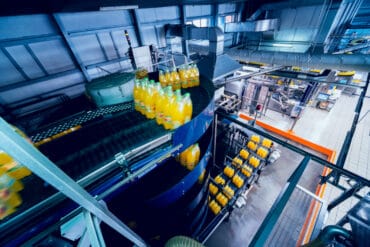
Key challenges businesses face when modernizing mainframes include security risks, increased costs, and application compatibility.
Businesses are moving more of their workloads from mainframes to cloud and other distributed platforms than ever before, but very few are moving entirely away from the mainframe.
That’s according to Kyndryl’s State of Mainframe Modernization survey, which found that only one percent of 500 business leaders surveyed planned to do away with the mainframe. On average, business leaders planned to take about 37 percent of workloads off the mainframe, with the vast majority shifting to cloud.
SEE ALSO: Report Shows Lack of Cloud Strategy Dampening Success
“Our survey reveals that mainframes increasingly become an integral part of hybrid cloud environments and continue to drive business value. However, the lack of a skilled workforce to support and secure these mission-critical environments is a significant cause of anxiety for many businesses,” said Petra Goude, Global Practice Leader for Core Enterprise at Kyndryl. “Finding a trusted advisor and integrator with deep expertise and experience is key to success – no matter where organizations are on their journey and how they aim to execute their transformation. The survey shows that maintaining the status quo is not a path to modernization or growth.”
Business leaders cite flexibility and costs to modernize mainframe technology as two key reasons for shifting some operations to the cloud. However, the mainframe market is unlikely to contract as heavily as some may expect, as it is still considered more secure and reliable than the cloud by business leaders.
In the survey, 90 percent of business leaders said that the mainframe was key to their operations. The most valued factors of mainframe technology included security, reliability, and performance. This links with how businesses in all industries are modernizing the mainframe to fit in with their operations strategy, moving some of the flexible workflows to the cloud while keeping the most critical on the mainframe.
Modernization efforts for mainframes are looking for improvements which align with what businesses are finding from cloud, such as accessibility, efficiency, and cost effectiveness. According to Kyndryl, modernization projects have led to a nine percent increase in profitability, while those choosing to integrate with cloud or move off the mainframe saw an 11 percent increase in profitability.
Some of the key challenges businesses face with mainframe modernization efforts include security risks, increased costs, and application compatibility. Businesses are combatting these challenges by optimizing performance and capacity, alongside choosing applications to retire or consolidate, making the modernization effort more cost effective. Employing a DevSecOps integration further improves the cost effectiveness of modernization efforts by bringing together development, IT operations, and security.
For businesses that have already made the switch to the cloud, 43 percent said the shift resulted in consolidation of technology, while 40 percent are now accessing cloud-native services. In the survey, continuous development, greater agility, and improved scalability were referenced as three of the key benefits of moving some workloads to the cloud. However, there are concerns from those businesses which have recently made the move or plan to in the near future, including security, unpredictable costs, and complexity.
It appears for now that while more and more workflows are being shifted to cloud, the mainframe is still a critical technology for businesses of all shapes and sizes, providing predictability, consistency, and security.



























